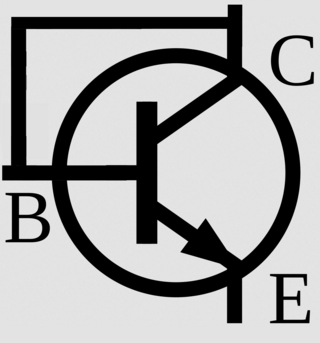Top Qs
Timeline
Chat
Perspective
Diode-connected transistor
From Wikipedia, the free encyclopedia
Remove ads
A diode-connected transistor is a method of creating a two-terminal rectifying device (a diode) out of a three-terminal transistor. A characteristic of diode-connected transistors is that they are always in the saturation region for metal–oxide–semiconductor field-effect transistors (MOSFETs) and junction-gate field-effect transistors (JFETs), and in the active region for bipolar junction transistors (BJTs).

A diode-connected transistor is made by connecting
Diode-connected transistors are used in current mirrors to provide a voltage drop that tracks that of the other transistor as temperature changes.[2] They also have very low reverse leakage currents.[3]
Remove ads
References
Wikiwand - on
Seamless Wikipedia browsing. On steroids.
Remove ads
